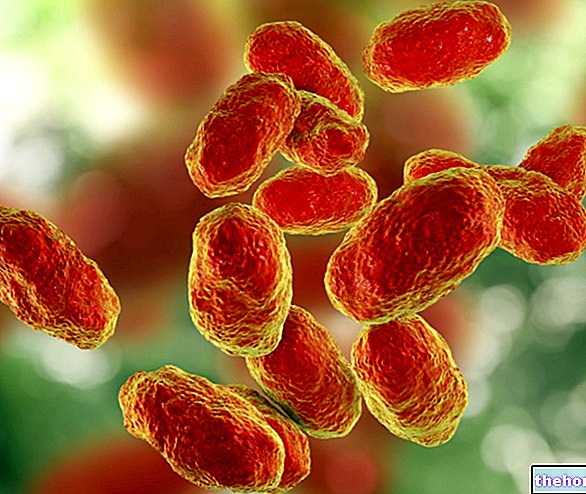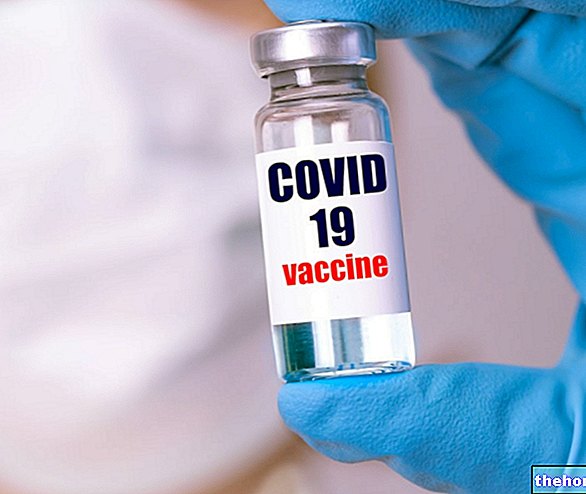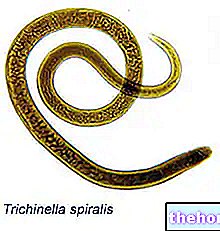The meningococcus
In microbiology, meningococcus is known as Neisseria meningitidis: as can be seen from the scientific name of the bacterium, meningococcus is the etiopathological agent responsible for meningitis, a rather rare but very serious disease.

It should be noted, however, that the meningococcus, despite being a commensal of the oropharyngeal tract, can favor particularly severe clinical pictures, which can seriously endanger the life of the affected patient. Meningococcal meningitis continues to remain a medical problem as much felt as it is feared, especially in developing countries, where the hygienic conditions of the environments and of the population are rather poor; the meningococcus, therefore, continues to claim numerous victims and, although the infection has been thoroughly studied by researchers, an effective pharmacological treatment has not yet been reached.
Microbiological analysis
Identified only in 1884, meningococcus is a gram-negative, immobile, asporigenous, oxidase-positive obligate aerobic bacterium, with an estimated size of around 0.6 x 0.8 microns; meningococcus can live in pairs (diplococcus) or remain single, and most of the forms are sensitive to the external environment and to desiccation. Precisely because of their sensitivity to physical, chemical and mechanical agents, meningococci are often destined for autolysis: the autolytic process of the microorganism is an expression of the intervention of some enzymes, whose action is almost comparable to the autolysis of the gonococcus, due to "amidase (enzyme that exerts its action at the level of the gonococcal peptidoglycan).
Again, the meningococcus is unable to ferment lactose, rather it ferments glucose and maltose (without creating gas).
The optimal growth conditions for meningococci are:
- Carbon monoxide atmosphere 5-10%
- Optimal growth temperature: 35-37 ° C
- Ideal culture medium: chocolate agar
Classification
Being gram-negative bacteria, meningococci have:
- outer cell membrane;
- polysaccharide capsule → located outside the cell membrane, the capsule is useful for protecting the bacterium during the infectious process;
- pili → are formed by protein polymers, directly localized on the bacterial surface; allow it to adhere to target cells.
The classification of meningococci must be carried out on the basis of the characteristics of the polysaccharide capsule: starting from the capsular antigens, in fact, these bacteria can be cataloged into 13 classes (serum-groups), individually distinguished by a letter of the alphabet; among these, the pathogens inserted in class B and C constitute the most widespread serum groups.
However, the classification of meningococci should not be done solely on the basis of the characteristics of the capsule; in fact, a "further division of the types of meningococcus was elaborated according to the characteristics of the outer membrane proteins and of the lipo-oligosaccharides (cell wall antigens or, more simply, LOS), which allowed to differentiate the meningococci in types, serotypes and immunotypes.
Causes and incidence
The meningococcus, having a marked tropism (affinity) for the central nervous system, spreads into the bloodstream starting from the nasopharynx, and from there it can damage meninges, synovium, skin and adrenal gland.
Meningococcal infections - where the incidence is higher in the so-called meningitis fascia, in Africa - they can occur both in endemic and sporadic form (incidence: 10-25 cases per 100,000 people); in industrialized countries, on the other hand, meningococcal infections are quite rare and are approximately around 1-3 cases per 100,000 inhabitants.
It is observed that infections mediated by meningococcus tend to affect children between the ages of 6 months and 5 years, and children between the ages of 15 and 25 (especially if forced to live in overcrowded environments, such as prisons, barracks, etc. ). Medical statistics show that most meningococcal infections are diagnosed in the winter-spring months, following contact with saliva droplets emitted by a healthy carrier.
Despite the great interest of the medical profession in the meningococcus, the mechanism by which the bacterium infests the bloodstream is not fully understood; what is demonstrated is that the meningococcus, adhering to human target cells (epithelial cells of the nasopharynx mucosa) by means of the pili, begins a process of endocytosis.
A healthy organism, at the first attack by the meningococcus, reacts with a specific immune response, producing bactericidal antibodies which, by activating complement and other cytotoxic mediators, are able to remove and kill the meningococcus. According to these words, it is understood how a "possible alteration of the complement system and / or a deficit of IgA and IgM antibodies exaggeratedly increases the risk of diffusion of the meningococcus in the bloodstream.
Tobacco addiction and passive smoking constitute two important risk elements for contracting meningococcal infection: smoking, in fact, by damaging the epithelium of the nasopharynx favors the translocation of the bacillus.
The healthy carrier man is the only natural reservoir for meningococcal infection.
Other articles on "Meningococcus"
- Meningitis and Meningococcal Sepsis
- Meningococcal Vaccination - Anti-Meningococcal Vaccine
















.jpg)











